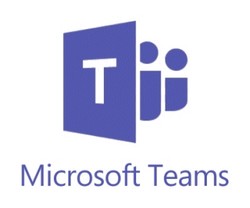How to Use Microsoft Teams to Work from Home

April 25, 2020
The COVID-19 pandemic has forced many small businesses to instantly have to enable work from home (WFH) technology for their workforce. Since many businesses are already leveraging Microsoft Office 365 for email, they are turning to the Real-time communication and collaboration software, Microsoft Teams, which in most cases is already part of their subscription, to remain productive at home and improve overall communication.
For many organizations, this means no need to go outside of the already familiar Microsoft ecosystem to an unfamiliar and less secure group video chat and conferencing platforms that may not have the necessary security features in place to keep your organization's PII safe.
But the magic question is how to use Microsoft Teams to work from home with your workforce when for many of us are putting your untested work from home strategies together on the fly enduring trial by fire. It may be time to bring in a professional Microsoft Cloud Service Provider (CSP) who can help you make sure your people have the basics down.
Brought on by the competition between UCASS platforms such as Zoom, Microsoft is stepping up the addition of features such as 3x3 video, raise hands, and custom backgrounds. Until now, you could only see a 2 x 2 panel of active video participants; however, with a recent update, you can now see a 3 x 3 panel for a total of 9 simultaneous users on a video call at any given time. Active speakers will automatically be presented if they begin talking. With the increased bandwidth for video, your remote workforce needs to have the necessary bandwidth to support a propper Teams meeting. Microsoft Teams requires the same upload and download internet bandwidth for the following scenarios:
- 30 Kbps for Peer-to-Peer audio calling
- 1.2 Mbps for peer-to-peer HD-quality video calling at 720p
- 1.5 Mbps for peer-to-peer HD-quality video calling at 1080p
- 500 Kbps/1 Mbps for group video calling
Consulting with your IT partner will surely put you in a better position to cope with remote work demands. Managed IT Services providers (MSPs) like us are regular remote access practitioners. We handle remote services daily and provide you with valuable insights on keeping your business running smoothly through these trying times. Contact us today to learn more.
